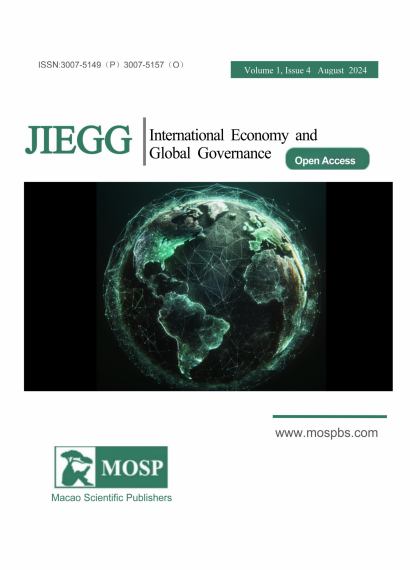-
FAO (Director). (2023, April 6). Reducing Food Loss and Waste Through Sustainable Food Cold Chains [Video recording]. https://www.fao.org/climate-change/resources/videos/detail/reducing-food-loss-and-waste-through-sustainable-food-cold-chains/en
-
WHO. (2023, September 16). Noncommunicable Diseases. https://www.who.int/news-room/fact-sheets/detail/noncommunicable-diseases
-
Dong, Y., Miller, S. A., & Keoleian, G. A. (2022). Estimating the Greenhouse Gas Emissions of Cold Chain Infrastructure in China from 2021 to 2060. Sustainable Production and Consumption, 31, 546–556. https://doi.org/10.1016/j.spc.2022.03.017
-
Si, Y. (2022). Agricultural Cold Chain Logistics Mode Based on Multi-Mode Blockchain Data Model. Computational Intelligence and Neuroscience, 2022, 1–12. https://doi.org/10.1155/2022/8060765
-
Sustainable Energy for All. (2022). Chilling Prospects: Tracking Sustainable Cooling for All 2022. Sustainable Energy for All. https://www.seforall.org/our-work/research-analysis/chilling-prospects-series/chilling-prospects-2022
-
UNEP & FAO. (2022). Sustainable Food Cold Chains: Opportunities, Challenges and the Way Forward. UNEP; FAO; https://doi.org/10.4060/cc0923en
-
UNEP. (2022, November 12). Amid Food and Climate Crises, Investing in Sustainable Food Cold Chains Crucial. https://www.unep.org/news-and-stories/press-release/amid-food-and-climate-crises-investing-sustainable-food-cold-chains
-
Ghantous, N. (2022, November 29). Cool Bananas: Efficient Cold Chain Technology for a Clean Agriculture Boom. Energy Monitor. https://www.energymonitor.ai/sectors/heating-cooling/cool-bananas-efficient-cold-chain-technology-for-a-clean-agriculture-boom
-
Gray, A. (2021). ‘Milk Actually Comes from a Cow’: Ontario Dairy Farmers’ Reactions and Interventions with Consumers’ Milk Rifts as Third‐party Alienation. Journal of Agrarian Change, 21(3), 504–521. https://doi.org/10.1111/joac.12406
-
Li, H., & Pan, P. (2021). Food Waste in Developed Countries and Cold Chain Logistics. E3S Web of Conferences, 251, 03001. https://doi.org/10.1051/e3sconf/202125103001
-
Shashi, S., Centobelli, P., Cerchione, R., & Ertz, M. (2021). Food Cold Chain Management: What We Know and What We Deserve. Supply Chain Management: An International Journal, 26(1), 102–135. https://doi.org/10.1108/SCM-12-2019-0452
-
Yu, Z., Liu, Y., Wang, Q., Sun, L., & Sun, S. (2021). Research on Food Safety and Security of Cold Chain Logistics. IOP Conference Series: Earth and Environmental Science, 647(1), 012176. https://doi.org/10.1088/1755-1315/647/1/012176
-
Darku, E. N. D., & Akpan, W. (2020). Selling Culture: A Buy Local Campaigns in the Ghanaian and South African Textile and Clothing Industries. Journal of Enterprising Communities: People and Places in the Global Economy, 14(4), 643–662. https://doi.org/10.1108/JEC-09-2019-0088
-
D’Odorico, P., Carr, J. A., Davis, K. F., Dell’Angelo, J., & Seekell, D. A. (2019). Food Inequality, Injustice, and Rights. BioScience, 69(3), 180–190. https://doi.org/10.1093/biosci/biz002
-
Hu, G., Mu, X., Xu, M., & Miller, S. A. (2019). Potentials of GHG Emission Reductions from Cold Chain Systems: Case Studies of China and the United States. Journal of Cleaner Production, 239, 118053. https://doi.org/10.1016/j.jclepro.2019.118053
-
Mercier, S., Mondor, M., McCarthy, U., Villeneuve, S., Alvarez, G., & Uysal, I. (2019). Optimized Cold Chain to Save Food. In Saving Food (pp. 203–226). Elsevier. https://doi.org/10.1016/B978-0-12-815357-4.00007-9
-
Brookie, K. L., Best, G. I., & Conner, T. S. (2018). Intake of Raw Fruits and Vegetables Is Associated With Better Mental Health Than Intake of Processed Fruits and Vegetables. Frontiers in Psychology, 9, 487. https://doi.org/10.3389/fpsyg.2018.00487
-
Otero, G., Gürcan, E. C., Pechlaner, G., & Liberman, G. (2018). Food Security, Obesity, and Inequality: Measuring the Risk of Exposure to the Neoliberal Diet. Journal of Agrarian Change, 18(3), 536–554. https://doi.org/10.1111/joac.12252
-
Mercier, S., Villeneuve, S., Mondor, M., & Uysal, I. (2017). Time–Temperature Management Along the Food Cold Chain: A Review of Recent Developments. Comprehensive Reviews in Food Science and Food Safety, 16(4), 647–667. https://doi.org/10.1111/1541-4337.12269
-
Woods, R. J. H. (2017). Nature and the Refrigerating Machine: The Politics and Production of Cold in the Nineteenth Century. In J. Radin & E. Kowal (Eds.), Cryopolitics (pp. 89–116). The MIT Press. https://doi.org/10.7551/mitpress/10456.003.0010
-
Saif, A., & Elhedhli, S. (2016). Cold Supply Chain Design with Environmental Considerations: A Simulation-optimization Approach. European Journal of Operational Research, 251(1), 274–287. https://doi.org/10.1016/j.ejor.2015.10.056
-
Freidberg, S. (2015). Moral Economies and the Cold Chain. Historical Research, 88(239), 125–137. https://doi.org/10.1111/1468-2281.12076
-
Bronwen Morgan. (2014, August 22). Crowdfunding and Ownership in the Sharing Economy. https://clmr.unsw.edu.au/article/corporate-structure/social-enterprise/crowdfunding-and-ownership-in-the-sharing-economy
-
Smith, D., Miles-Richardson, S., Dill, L., & Archie-Booker, E. (2013). Interventions to Improve Access to Fresh Food in Vulnerable Communities: A Review of the Literature. International Journal on Disability and Human Development, 12(4). https://doi.org/10.1515/ijdhd-2013-0203
-
Harvard T.H. Chan School of Public Health. (2012, September 18). Vegetables and Fruits. The Nutrition Source. https://nutritionsource.hsph.harvard.edu/what-should-you-eat/vegetables-and-fruits/
-
Freidberg, S. (2010). Freshness from Afar: The Colonial Roots of Contemporary Fresh Foods. Food and History, 8(1), 257–278. https://doi.org/10.1484/J.FOOD.1.100983
-
James, S. J., & James, C. (2010). The Food Cold-chain and Climate Change. Food Research International, 43(7), 1944–1956. https://doi.org/10.1016/j.foodres.2010.02.001
-
Reichman, D. (2008). Justice at a Price: Regulation and Alienation in the Global Economy. PoLAR: Political and Legal Anthropology Review, 31(1), 102–117. https://doi.org/10.1111/j.1555-2934.2008.00010.x
-
Likar, K., & Jevšnik, M. (2006). Cold Chain Maintaining in Food Trade. Food Control, 17(2), 108–113. https://doi.org/10.1016/j.foodcont.2004.09.009
-
Freidberg, S. (2004). French Beans and Food Scares: Culture and Commerce in an Anxious Age. Oxford University Press, USA.
-
Goodman, D., & Redclift, M. (2002). Refashioning Nature: Food, Ecology and Culture (0 ed.). Routledge. https://doi.org/10.4324/9780203414781
-
Wilk, R. R. (1999). ‘Real Belizean Food’: Building Local Identity in the Transnational Caribbean. American Anthropologist, 101(2), 244–255. https://doi.org/10.1525/aa.1999.101.2.244
-
Juric, B., & Worsley, A. (1998). Consumers’ Attitudes Towards Imported Food Products. Food Quality and Preference, 9(6), 431–441. https://doi.org/10.1016/S0950-3293(98)00027-5
-
Bélisle, F. J. (1984). Tourism and Food Imports: The Case of Jamaica. Economic Development and Cultural Change, 32(4), 819–842. https://doi.org/10.1086/451428
-
UN. (n.d.). The 17 Goals. United Nations. Retrieved 10 June 2024, from https://sdgs.un.org/goals

